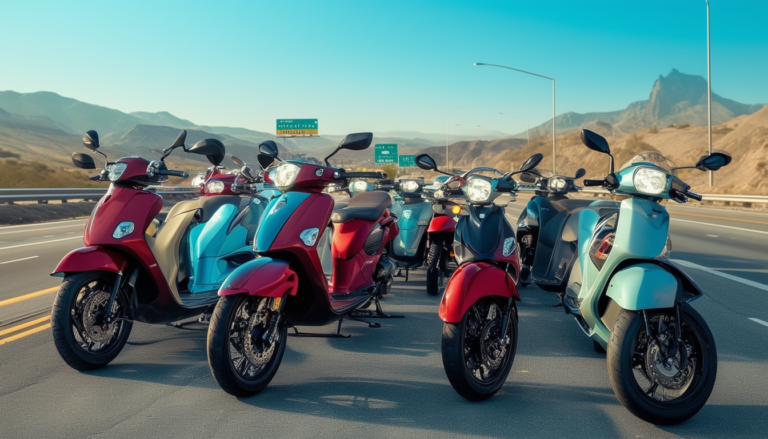Understanding the Legality of Motorcycle Lane Splitting in New Jersey: Insights from Experts
Navigating the world of motorcycles comes with its complexities, especially when it relates to lane splitting. This maneuver, often seen on crowded roads, involves riding a motorcycle between lanes of traffic, leading to numerous discussions about its legality. In New Jersey, the laws surrounding lane splitting can be ambiguous, prompting riders and motorists alike to seek clarity. With insights from experts and seasoned riders, we delve into the nuances of lane splitting in the Garden State, exploring its implications for both motorcyclists and other road users.
Motorcycle lane splitting, a maneuver that involves riding between lanes of traffic, has become a topic of significant discussion among riders and legislators alike. In New Jersey, the legality of this practice is not straightforward, leaving many motorcyclists confused about what is permitted. This article delves into the perspectives of experts, exploring the nuances of lane splitting within the state’s traffic laws and the implications for motorcycle safety.
The Definition of Lane Splitting
Lane splitting is a term that describes the act of a motorcycle rider navigating between stationary or slow-moving vehicles in adjacent lanes. While it can be beneficial for easing congestion, particularly in heavy traffic situations, its legal status varies widely across the country. Understanding these distinctions is crucial for riders as they move through different states.
Legal Framework for Motorcycles in New Jersey
In New Jersey, motorcycle laws are primarily dictated by the state’s motor vehicle regulations. According to the law, motorcycles are classified as motor vehicles, which means they must adhere to the same traffic regulations as cars. Currently, New Jersey does not have specific legislation addressing lane splitting, leading to ambiguous interpretations of the legality of this practice.
Expert Insights on Lane Splitting
Experts in motorcycle safety, such as those from the Motorcycle Safety Foundation, emphasize the importance of responsible riding. They note that while lane splitting can help prevent rear-end collisions by allowing motorcyclists to maneuver out of harm’s way, it can also pose risks if not executed carefully. The absence of clear laws regulating this behavior leaves motorcyclists at risk of being cited for improper passing.
Analysis of Current Traffic Laws
Under New Jersey’s traffic laws, motorcycles must pass other vehicles at a safe distance, primarily to the left. Lane splitting, which often involves passing on both sides of vehicles, could be interpreted as a violation of these laws. Furthermore, experts warn that lane sharing—or riding two motorcycles side by side in the same lane—could also constitute reckless driving under state regulations.
The Call for Legal Reforms
There is an ongoing discussion among motorcyclists and advocates for clearer regulations regarding lane splitting in New Jersey. Some riders have even created petitions to legalize the practice, highlighting its potential safety benefits in certain circumstances. However, as of now, calls for legislative reforms have not resulted in any changes to the existing laws.
Safety Considerations and Best Practices
Motorcycle experts emphasize that safety should always be the top priority for riders. While lane splitting may offer advantages, it’s essential for riders to remain vigilant and assess the traffic conditions carefully. Responsible riding practices, such as signaling intentions and maintaining a safe speed, can minimize risks. Riders should exercise caution and respect surrounding vehicles to ensure everyone’s safety on the road.
Understanding the Legality of Motorcycle Lane Splitting in New Jersey
Motorcycle lane splitting remains a contentious issue in New Jersey, with its legal status often confusing for riders and drivers alike. Lane splitting, or riding a motorcycle between lanes of traffic, can improve a motorcyclist’s safety and efficiency; however, understanding the nuances of local laws is essential. This article summarizes expert insights on the legality of lane splitting and how it is perceived across different states, particularly in New Jersey.
Definition and Variability of Lane Splitting
Lane splitting> is often defined differently depending on the state. In certain places, it may be referred to as lane filtering, which typically involves slower speeds while navigating between stopped or moving vehicles. Knowledge of specific definitions is crucial for riders, as they can vary greatly, resulting in differing legal interpretations.
Legal Status in New Jersey
In New Jersey, there is no specific law that directly addresses lane splitting. However, experts indicate that this practice could potentially violate existing traffic laws, such as those concerning improper passing. The legal ambiguity can place riders at risk, particularly if they are involved in an incident while lane splitting.
Experts’ Perspectives on Lane Splitting
According to experts, many motorcyclists view lane splitting as a tactic that can enhance safety by preventing rear-end collisions, particularly in congested traffic. However, it’s essential for riders to remain aware of their surroundings and ensure that their lane-splitting actions do not startle other drivers.
Safety Considerations
Choosing to lane split requires careful judgment. Riders must engage in lane splitting responsibly and at safe speeds. Experts caution against high-speed lane splitting, as it increases the risk of accidents. Prioritizing safety while maneuvering through traffic is crucial to preventing accidents and maintaining a positive perception of motorcyclists.
Conclusion and Responsibility
Overall, while lane splitting can be a beneficial maneuver for motorcyclists, it is essential to approach it with caution and judgment. Understanding its legality and adhering to safe riding practices is vital in ensuring a smooth coexistence between motorcyclists and other road users. Adopting a responsible attitude contributes to a safer riding environment for everyone on the road.





